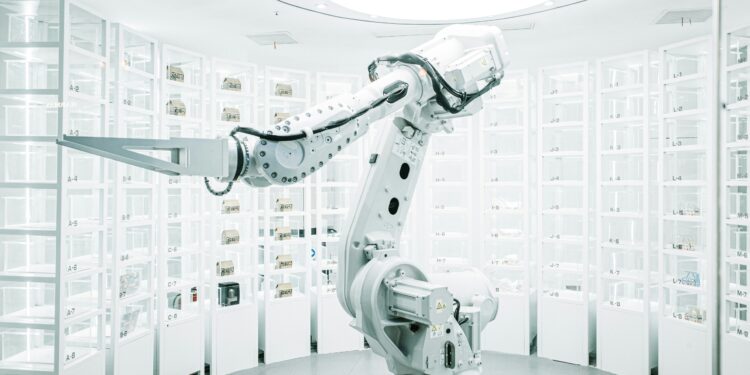Who gets sued when the algorithm is wrong?
That question, once theoretical, is now central to a field undergoing radical transformation. Radiology—the interpretive backbone of modern medicine—is becoming increasingly intertwined with artificial intelligence. AI systems now assist with everything from spotting microcalcifications in mammograms to flagging potential pulmonary embolisms in CT scans. These tools promise speed, accuracy, and scalability. But they also introduce new dimensions of legal risk.
As AI tools are integrated into clinical practice, radiologists find themselves navigating a dual frontier: technological innovation on one side, and legal ambiguity on the other. When an AI tool misses a diagnosis, misclassifies a lesion, or falsely reassures a clinician, who bears the burden of accountability? The physician? The hospital? The AI developer? Or all three?
The Rise of Algorithmic Assistance
The adoption of AI in radiology is not speculative—it’s operational. According to a 2024 survey by the American College of Radiology, over 60% of radiology practices have implemented some form of AI-assisted tool into their workflow. Popular systems like Aidoc, Zebra Medical Vision, and Google’s DeepMind are now used in both academic and private hospital settings.
These tools don’t act autonomously. Instead, they serve as adjuncts—highlighting suspicious regions, flagging potential abnormalities, or even scoring images based on risk. The final decision remains with the human radiologist. But as reliance grows, so too does the legal entanglement.
Legal Precedents in a Gray Zone
Currently, there are no definitive legal precedents that clearly outline the liability structure when AI tools contribute to a misdiagnosis. Courts are just beginning to confront these questions. In one early case, Doe v. MedScan Systems, a patient alleged delayed cancer diagnosis due to overreliance on an AI algorithm that failed to detect early signs in a lung scan. While the case was ultimately settled, it raised critical questions: Was the physician negligent in relying too heavily on AI? Was the hospital negligent in deploying unvetted software? Or was the algorithm itself the weak link?
U.S. law has not yet classified AI as a legally liable “entity.” Thus, in malpractice cases, liability often defaults back to the physician, even when an AI system influenced their decision-making.
The Double-Edged Sword of “Augmented” Intelligence
Radiologists now live in a paradox. AI is marketed as a tool that enhances human judgment. But when errors occur, that enhancement may be viewed in court as replacement.
Legal scholars refer to this as the “augmentation liability dilemma.” If a radiologist ignores an AI alert and misses a diagnosis, they may be faulted for not using the tool properly. But if they follow the AI recommendation and the diagnosis is wrong, they may be faulted for overreliance.
This creates an impossible bind—damned if you do, damned if you don’t. The question of “standard of care” becomes murky. Is it now standard to consult AI in every case? Or is AI still an optional aid?
Institutional Exposure and Product Liability
Hospitals and imaging centers may not be off the hook either. Institutions that license AI tools are also potential defendants in malpractice litigation. In legal terms, this is known as “enterprise liability,” where the system—not just the individual—is held accountable.
Meanwhile, developers of AI software might face claims under product liability laws. If an algorithm is found to be flawed in design or training data, plaintiffs may argue that the tool itself was “defective.” But here’s the catch: most AI vendors shield themselves with End User License Agreements (EULAs) that disclaim liability.
So while the tools are marketed as clinical-grade diagnostic aids, they are legally positioned as “decision support”—effectively washing the developer’s hands of clinical responsibility.
The FDA and Regulatory Gap
The FDA regulates AI tools through its Software as a Medical Device (SaMD) framework. But these guidelines are still evolving. Unlike traditional devices, AI systems update dynamically, sometimes weekly, based on new training data. This raises a critical question: Is the AI that was approved last year the same one being used today?
The agency is exploring a “predetermined change control plan”—a sort of regulatory sandbox to allow updates within defined parameters. But until this is standardized, clinicians and hospitals are left with tools that are simultaneously medical devices and beta software.
Toward a Legal Recalibration
To prevent a chilling effect on innovation—or a spike in defensive medicine—experts are calling for new legal frameworks. Some propose a “shared liability” model where risk is distributed among stakeholders: the physician, the institution, and the vendor.
Others suggest creating a new category of professional insurance for AI-augmented practitioners, akin to cybersecurity insurance in other industries. The American Medical Association has urged lawmakers to clarify liability standards before AI adoption outpaces jurisprudence.
A model law proposed by the Hastings Center and Stanford Law School advocates for a “learning health system” approach, where AI errors trigger algorithmic refinement, not just litigation. But these ideas remain aspirational.
Conclusion: Diagnosing the Future
Radiology is on the front lines of a transformation that will shape the future of medicine. AI is not replacing the radiologist—but it is reshaping what it means to be one. And with that redefinition comes a legal reckoning.
We are no longer debating whether AI can assist in diagnosis. That debate is settled. The question now is whether our legal and ethical systems are prepared to assist the people using it.
Until liability is as intelligently designed as the algorithms themselves, every diagnosis made with AI will carry a silent echo: not just “What does this scan show?”—but “Who will stand trial if it’s wrong?”















